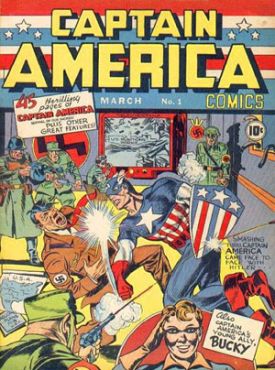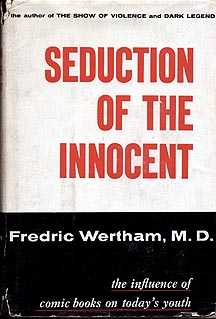Marvel History: Part 1 - The Golden Age
By Frederic Haddox
July 16, 2008 - 00:00
The megalith known as Marvel Comic books has been a key catalyst in the preservation of comic book culture in mainstream American society. Characters such as Spider-man, Hulk and the X-Men have not only become household names, but are well known throughout the World. Though prolific as this empire seems, like any other, it had humble beginnings.
The Golden Age
 |
Jack Kirby and Joe Simon’s Captain America arrived unto the comic scene in March of 1941. Having a centralized theme of American patriotism, Captain America was an instant hit. The Second World War definitely helped the success of Marvel Comics. Alongside The Human Torch and The Submariner, the “big three” were involved in numerous stories battling Nazis and the Japanese. Together they formed a strong combination that would survive until 1954. [1] With the enormous popularity of Disney and Warner Brother’s animation studios, comic book publishers strived to tap into this resource. Marvel Comics’s attempt came in the form of Super Rabbit and the duo of Ziggy Pig and Silly Seal. Plus, Basil Wolverton’s Power Pepper was featured for some flavoring. [2]
During the 1950’s, Marvel Comics went under the name Atlas Comics. With the Second World War ending at least five years before, the super heroes that were once revered were declining in popularity. The U.S. involvement in the Korean War only resulted in a popular surge of war Comic books. Marvel Comics’ Battle No. 1 came from this popularity. [2] It wasn’t long before superhero comic books were falling being not only war titles, but Western, crime, humor, romance and spy fiction Comic books as well.
Marvel Comics tried to make adjustments by publishing many Romance titles. By the end of the 40’s, many Marvel titles, such as Human Torch and Submariner changed into romance titles. The foremost being My Romance which featured writing by Stan Lee. Soon Western titles such as The Two Gun Kid, Annie Oakley, Tex Morgan and Kid Cold Outlaw emerged.
In 1950, Entertainment Comics (formerly Education Comics) began to lead the horror Comic book movement. Proving very popular, most publishers in the industry wanted to take advantage of this. Marvel Comics’ effort came in the form of Strange Tales in 1951. Unfortunately, due to the advent of the Comics Code of Authority in 1954, the entire industry suffered.
 |
In this book, Dr. Wertham states that comic books are responsible for almost all juvenile misbehavior from racial hatred to petty crime. Soon, the U.S. Senate ordered that a set of standards be made in order to minimize the negative effects of comic books. Many newsstands were thrilled to not carry comic books that didn’t have the comic code seal on them (comic books were often tedious to inventory due to their smaller size and large numbers).
Even though the contents of the code were created by a union of comic publisher as a means of self regulation, its effect proved disastrous to the industry. [2] Under the code, comic books had to display limited violence, sexual contact and negative language. [3] Changes could be seen in almost every genre of comic.
In Western comic books, there were fewer gunfights. In romance comic books , there was less romance. Even Funny Animal titles were forced to “curb” their violence. Horror comic books nearly suffered extinction. Science fiction titles seemed to survive this baptism. The recent creation of the atomic bomb combined with UFO interest (stemming from the Roswell incident in 1947 and numerous pulp literature that followed), brought out a surge in science fiction Comic books. To appease this interest, Marvel Comics brought out World of Suspense, World of Fantasy, Mystical Tales and World of Mystery.
References
1. ^Wikepedia, the free encylopedia: “Marvel Comics”
2. ^ www.chezcomics.com : “Marvel Comics History”
3. ^Grand Comics Database: “Powerhouse Pepper”
Related Articles:
Marvel History Part 8 - Marvel Today
Marvel History Part 7 - Millennium Revival
Marvel History Part 6 - 1990s Marvel
Marvel History Part 5 - The 1980s
Marvel History Part 4 - Mix Media
Marvel History Part 3 - The 1970s
Marvel History Part 2 - The Silver Age
Marvel History: Part 1 - The Golden Age
